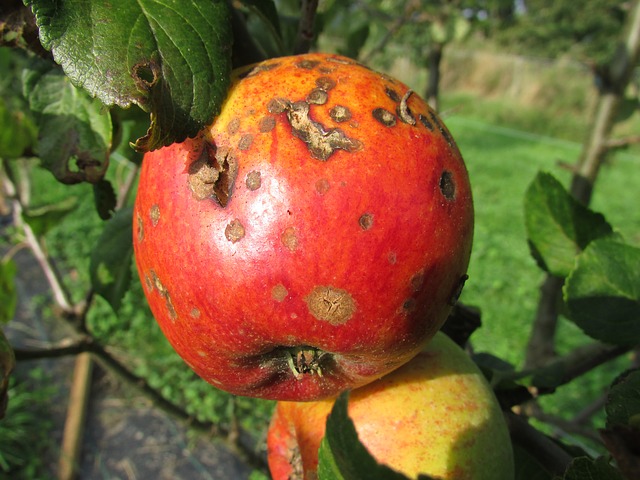According to the research by market
intelligence firm CCM, the major diseases on Chinese fields will likely occur
even more heavily than they did in 2017. The main reasons for this forecast can
be found in the planned crops distribution, the planting system, overwintering
population, and the predicted climate trend for 2018.

In
China, the overall occurrence of pests and diseases on crops used to be in a
severe situation during the last decade. The rising trend of pests and diseases
may have slowed down in recent years, but the situation remains serious.
According
to the forecast, the pest and disease occurrence in 2018 is expected to be
light to moderate, while wheat pests and diseases will experience a more
significant occurrence, stated to be moderate to heavy in the coming year.
Based
on this forecast, some pesticide varieties are going to witness a significant
growth in demand, with 30% or even more growth rates to counter the increasing
pests and diseases in the country.
Regarding
wheat diseases, especially head blight will have a high possibility to show a
heavy occurrence or even extreme occurrence, mostly in the Anhui and Jiangsu
provinces. Other diseases that are likely to occur in 2018, destroying parts of
wheat farming in the country will be wheat take-all, basal stem rot, root rot,
leaf blight, and snow mould.
China's
major rice diseases, including sheath blight, rice rust, false smut, and rice
virus diseases are likely to occur heavily on China's farms 2018. Sheath blight
will mostly appear along the Yangtze River, while rice rust is expected
especially in Southwest China.
According
to the disease forecast, especially corn diseases will occur much heavier than
it has been the case for 2017. The main diseases that are expected to
negatively impact the corn yield are northern leaf blight, southern leaf
blight, southern rust, and brown spot. Especially the Huanghuai Region in China
will be affected by corn diseases in 2018. Notably, breeds which are resistant
to stalk and ear rot will be in desperate demand because these diseases will
not only reduce yields but also degrade corn seed quality due to high
mycotoxins content in corn cubs.
The
main diseases for Chinese potatoes, namely late blight, is expected to occur at
a moderate rate in 2018, targeting the areas of eastern Southwest China as well
as northern Northeast.
In
2017, many diseases and pests occurred slightly less than in 2016, according to
official Chinese crop protection agencies. The common diseases of corn have
occurred roughly the same in both years, but diseases on wheat showed reduced
appearance in 2017. China's rice planting area witnessed a moderate occurrence
of pests and diseases.
China's main diseases and pests by crop in 2018

Source: CCM
Increasing resistance
of insects
A
big problem with increasing pest and disease occurrence in China is the
increasing resistance of insects towards pesticides. In the case of continuous
application of one insecticide, individuals with weak resistance are killed
each time, but the ones with strong resistance survive. After all, resistance
passes down through generations, resulting in higher resistance over time.
The
development of pesticide resistance is mainly related to the times one pesticide
is used or the quantity and concentration of pesticides. Usually, large
quantities of pesticides are used on vegetables with higher frequency, leading
to rapid resistance of pests on vegetables. Furthermore, pests can reproduce
many generations in a year. They are less likely to migrate and have fewer
options for host plants. Hence, long-term use of one pesticide is in favour of
forming a resistance.
Multiple
methods can be used to prevent pesticide resistance in terms of usage of
pesticides, such as the substitution of old pesticides for new ones. When pests
develop resistance to a certain kind of insecticide, another kind of pesticide
with different mechanism can be used to eliminate the pests' resistance to the
original pesticide. Experimental results show that alternate use of pesticides
with different mechanism can significantly delay resistance and improve
the effect of control.
Rational
use of mixed pesticides can improve the efficiency of control and delay
resistance. What's more, use of mixed pesticides, of which against different
pests respectively, can also reduce the frequency of usage and thus cut down
labour costs.
Integrated
prevention and control measures such as agricultural control and biological
control can reduce the use of chemical pesticides and prevent the development
of pesticide resistance.
About the article
The
information for this article comes from market intelligence firm CCM, China's
leading research firm in the fields of agriculture, chemicals, food and feed.
Get
premium insights into China's crop protection market with CCM's
monthly crop protection newsletter. The publication analyses China's market
trends, company dynamics, politic changes, import and export trends, and any
other newsworthy stories.
You
can also get a 7 day free trial at CCM's Online Platform to enable access to
the whole market research on China's crop protection market for the last 17
years, including additional functions like price forecasting, company database,
and news aggregator.
Join the discussion in our LinkedIn group for China's agricultural market or our Facebook group, if you prefer.
In any case, follow us on Twitter: @CCM_Kcomber